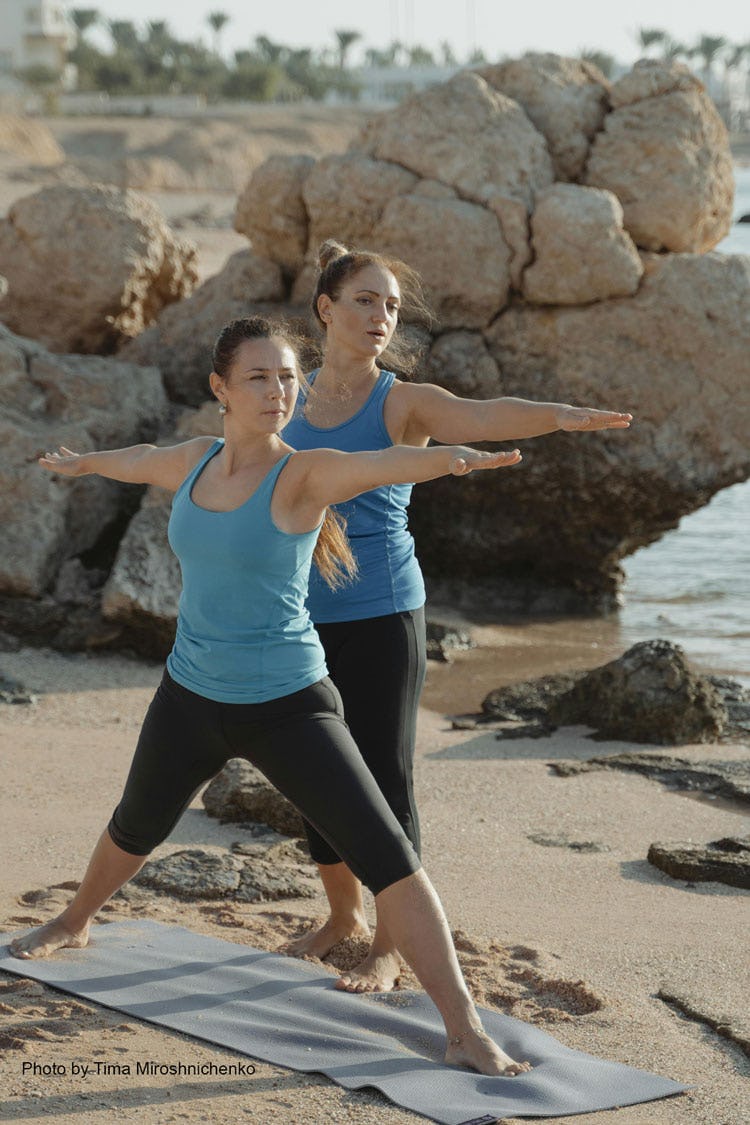Enhancing Stroke Recovery Using Motor Imagery in Yoga Therapy
Timeless Wisdom of Eleanor Criswell

teaching yoga on the beach two women
Lay Summary
(an easy-to-read summary of the more detailed article below)
Read time: 1 min
Motor imagery is a technique where clients imagine movements before doing them. Recent research shows that combining this with watching others perform the same actions helps improve movement skills in stroke recovery. This method activates brain areas related to movement and helps the brain form new connections. Using motor imagery in yoga therapy can help clients prepare for movement, leading to better performance and greater body awareness.
Full Article: Using Motor Imagery in Yoga Therapy
In my Somatic Yoga® training with Dr. Eleanor Criswell, one piece of advice always stood out to me: "Ask your client to imagine making the movement first, without actual movement, then cue the movement into the pose." I have employed that suggestion for years and have found it to be useful with all clients, but profoundly so with clients who have neurodegenerative disorders, post-rehabilitation stroke, and traumatic physical injury.
I know now that she was asking us to use 'motor imagery' before asking our students to perform a movement or pose. With her deep understanding of the mind-body connection, Eleanor knew something recent science is now beginning to explain in more detail.
I recently stumbled upon an article (Seitz et al., 2024) in the Scientific Reports section of Nature, a highly respected scientific journal, that validated Eleanor's wisdom. While the use of motor imagery in rehabilitation is not new, this article provides new evidence supporting its effectiveness, especially when combined with action observation. The study showed that patients who mentally simulated movements while watching others perform the same actions exhibited significant improvements in dexterity and motor skills. This combination enhances the activation of motor-related brain regions more effectively than either technique alone, promoting neuroplasticity—the brain's ability to reorganize and form new neural connections. By using motor imagery, clients can mentally prepare their bodies for movement, leading to better performance and a greater sense of body awareness during physical practice.
For Yoga therapists, this is a game-changer.
Drawing from my own experience and Eleanor's teachings and vast experience, I encourage fellow Yoga therapists to explore the power of motor imagery. What is your experience with motor imagery?
Seitz, S., Schuster-Amft, C., Wandel, J., Bonati, L. H., Parmar, K., Gerth, H. U., & Behrendt, F. (2024). Effect of concurrent action observation, peripheral nerve stimulation and motor imagery on dexterity in patients after stroke: a pilot study. Scientific reports, 14(1), 14858. https://doi.org/10.1038/s41598-024-65911-7

